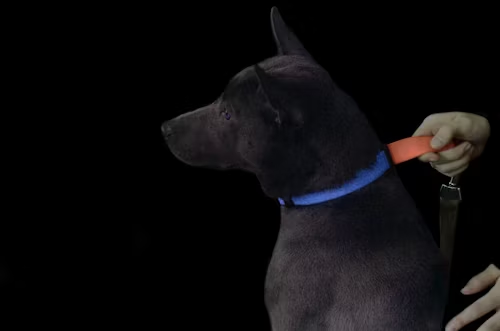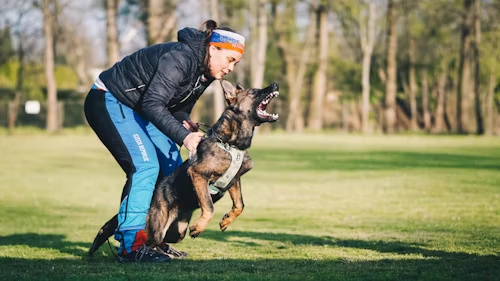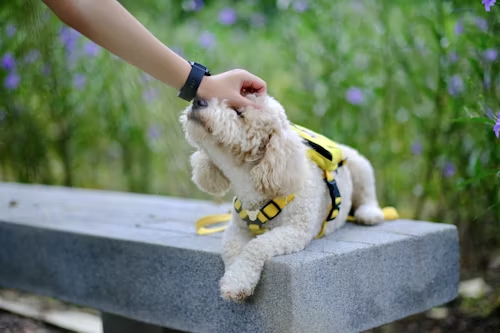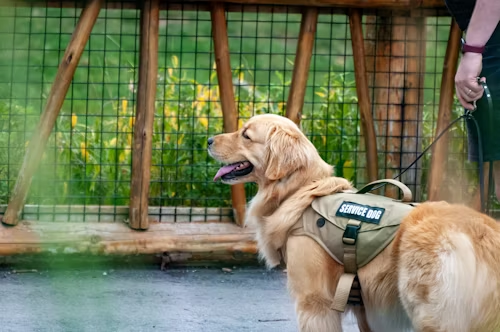Let’s talk openly about something many dog owners quietly wonder about: dog training collars.
Maybe you’ve tried every trick in the book—treats, classes, firm commands—and your dog still barks too much, jumps on guests, or bolts when you call. It’s frustrating, isn’t it? You love your dog, but you also need boundaries.
At some point, you probably heard about training collars—sometimes called e-collars, shock collars, or vibration collars. But then come the mixed opinions: some trainers say they work wonders, others call them cruel. So what’s the truth?
As someone who has worked with dogs for years, I’ll walk you through what dog training collars really are, how they work, and how to use them safely and humanely.
What Exactly Is a Dog Training Collar?
Think of a dog training collar as a communication device, not a punishment tool. It helps you get your dog’s attention instantly when they’re distracted or ignoring commands.
These collars come with different signals—some vibrate, some beep, and some deliver a gentle static sensation that feels like a tap on the skin. The goal isn’t to scare your dog; it’s to redirect their focus so you can teach more effectively.
When used correctly, a training collar can be one of the most useful tools in your kit. When misused, it can cause confusion or fear. That’s why understanding it matters more than the device itself.
The Main Types of Dog Training Collars

Let’s go through the main types, so you know what each does and when it makes sense to use one.
1. Vibration Collars
Vibration collars are one of the gentlest and most beginner-friendly tools out there. They work by sending a small vibration through the collar; just enough to get your dog’s attention without causing discomfort.
Many owners use them to reinforce obedience cues like “come” or “sit,” especially if their dog gets distracted easily. For smaller or more sensitive dogs, this mild cue is often all that’s needed to redirect behavior.
What makes vibration collars so appealing is how natural they feel to use. Instead of relying on verbal corrections or leash tugs, you can communicate quietly and consistently.
When used with praise or treats, dogs quickly learn that the vibration means “listen up, something good’s coming.” It’s a gentle and positive way to build focus without fear; a great option for pet parents who want to train kindly but effectively.
2. Static (or Shock) Collars
The term “shock collar” can sound harsh, but in reality, modern static collars are carefully designed to be humane and adjustable. They work by sending a tiny, brief static pulse; similar to the light static you might feel when touching a metal doorknob.
The goal isn’t to cause pain; it’s simply to get your dog’s attention in moments when they’re ignoring other cues. Used responsibly, static collars can be very effective for larger or more stubborn dogs who don’t respond to softer signals.
The key with static collars is how you use them. Start with the lowest level and gradually increase only if your dog doesn’t react. Always pair the correction with a verbal command and reward the right response. This builds understanding rather than fear.
Many professional trainers rely on these collars not because they’re harsh, but because they offer precise timing and control. When used with care and compassion, a static collar can reinforce good behavior safely, especially in open spaces or off-leash training.
3. Spray Collars
Spray collars use an entirely different approach, they rely on scent and surprise rather than touch or sound. When your dog barks or misbehaves, the collar releases a quick puff of air or a harmless citronella mist.
Dogs dislike the unexpected burst, so they quickly learn to associate quiet or calm behavior with comfort. For many pet parents, it’s a gentle, no-electric option that still gets results.
These collars are especially popular for controlling nuisance barking. Imagine your dog barking non-stop when the mail arrives; a single mist is often enough to break the cycle. The best part? There’s no static or vibration involved, just a light deterrent that resets their focus.
The only drawback is maintenance; the spray cartridges need refilling. Still, for small or sound-sensitive dogs, spray collars can be a smart, humane training aid when paired with patience and positive reinforcement.
4. Ultrasonic Collars
Ultrasonic collars take a sound-based approach to training. They emit a high-frequency tone that only dogs can hear, interrupting unwanted behaviors like barking or jumping.
To humans, the sound is inaudible, but to dogs, it’s mildly annoying, making it an effective way to say, “That’s not okay.” These collars can be automatic or remote-controlled, giving you flexibility depending on what you’re trying to teach.
One of the biggest benefits of ultrasonic collars is their gentleness; there’s no physical contact or static involved. They’re ideal for owners who prefer a hands-off method or who have multiple pets in the home.
However, not all dogs respond to sound-based correction. Some may tune it out completely, while others might find it startling at first. Like any training tool, the ultrasonic collar works best when paired with positive cues and rewards, helping your dog understand what you do want instead of only what you don’t.
5. GPS or Smart Collars
If you’re a tech-loving dog owner, GPS or smart collars are like the future of training. These high-tech devices combine tracking, communication, and health monitoring all in one.
They can send vibration or tone cues, monitor your dog’s activity levels, and even alert you if your dog wanders too far from home. For adventurous dogs who love the outdoors, these collars offer both safety and training convenience.
What sets smart collars apart is how much information they give you. You can check your dog’s location in real-time, track their daily exercise, and reinforce training commands; all from an app on your phone. While they’re more expensive than traditional collars, they provide peace of mind that’s hard to beat.
If your goal is off-leash freedom with built-in safety, GPS collars are worth the investment. Just remember, technology is a tool; your attention, patience, and positive communication are still the heart of good dog training.
How Dog Training Collars Actually Work
Dog training collars work on associative learning; the same principle used in all animal training.
When your dog barks, pulls, or ignores a command, the collar provides a signal; a tone, vibration, or static touch.
That signal interrupts the behavior and redirects their attention to you. Then, when you give a command (“Sit,” “Come,” “Quiet”) and reward the right response, your dog learns what’s expected.
Over time, you rely less on the collar and more on your voice or hand signals. The collar becomes a temporary training aid, not a lifelong dependency.
Are Dog Training Collars Safe?
This is the question every responsible dog owner should ask. Here is the truth: when used properly, they’re safe. When used as punishment or at high intensity, they’re not.
The safety of a training collar depends entirely on you; the human at the other end of the leash. If you stay calm, consistent, and kind, the collar becomes a teaching tool. If you use it in frustration, it becomes harmful.
Professional trainers and veterinarians agree: dog training collars should always be paired with positive reinforcement; praise, play, or treats. The collar isn’t meant to replace patience or kindness; it’s meant to reinforce them. A few safety rules:
- Start at the lowest intensity level possible.
- Never use it when you’re angry or frustrated.
- Keep sessions short from 10 to 15 minutes max.
- Check your dog’s neck daily to prevent irritation.
- Remove the collar after training.
The Benefits of a Dog Training Collar

1. Clearer Communication
A training collar helps your dog understand what you mean in real time. The gentle cue whether it’s a vibration, tone, or mild correction lets them know, “Hey, pay attention.” Over time, this builds a strong connection between your commands and their actions, making training smoother and less stressful for both of you.
2. Safer Outdoor Freedom
If you dream of letting your dog explore off-leash safely, a training collar can help. It reinforces recall commands, ensuring your dog comes back when called; even around distractions. This gives your dog more freedom while keeping them protected from potential dangers.
3. Reduced Unwanted Behaviors
From barking and jumping to digging or chasing, training collars can help break bad habits gently. A quick cue redirects their focus, allowing you to reward calm, good behavior instead. It’s a kind, effective way to guide your dog toward better manners.
4. Faster Progress
Because the collar lets you respond instantly, your dog connects actions and corrections quickly. This shortens training time and keeps lessons clear and consistent. You’ll see results faster, and your dog will feel more confident knowing exactly what you expect.
5. Stronger Bond
When training becomes clear and consistent, your relationship naturally improves. There’s less frustration, more trust, and a deeper sense of teamwork. The collar simply helps you communicate better, and that makes every walk, game, or training session more enjoyable.
Choosing the Right Dog Training Collar
Not every training collar is built the same, and choosing the wrong one can make training harder instead of easier. The right collar, on the other hand, helps your dog understand you faster and makes every session smoother. Here’s how to find one that truly fits your dog’s needs.
Step 1: Consider Your Dog’s Size and Temperament
Start by thinking about your dog’s personality and build. A small or sensitive dog will need very light feedback, such as vibration or tone, while confident or larger breeds might require slightly stronger settings to notice the cue. Always choose a collar designed specifically for your dog’s weight and behavior level to ensure safety and comfort.
Step 2: Know Your Training Goal
Ask yourself what you’re trying to achieve. If your main issue is barking, a spray or ultrasonic collar might be best. For off-leash training or recall, go for a vibration or static collar with adjustable intensity. Matching the collar to your training goal helps you stay consistent and get better results.
Step 3: Look for Safety and Comfort Features
A good collar should always prioritize your dog’s well-being. Look for features like waterproofing, an automatic shut-off, and multiple sensitivity levels. Make sure the collar fits snugly but not tightly — you should be able to slide two fingers underneath it comfortably.
Step 4: Battery Life and Range
If you plan to train outdoors or at long distances, reliability matters more than bells and whistles. Choose a collar with strong signal range (at least a few hundred yards) and long battery life. This ensures your training sessions aren’t cut short and that the collar works when you need it most.
Step 5: Set a Reasonable Budget
You don’t have to buy the most expensive model, but avoid the cheapest options too. A quality dog training collar typically costs between $40 and $250, depending on features. A well-made collar lasts longer, performs more reliably, and keeps your dog safe during training.
How to Use a Dog Training Collar Step by Step
Let me walk you through how I’d introduce a collar to a new client’s dog.
- Familiarization: For the first few days, let your dog wear the collar turned off. You want them to see it as something normal, not scary.
- Add verbal cues: Start training with your voice first. For example, say “Come,” and if your dog ignores you, follow with a vibration cue. When they come, reward immediately.
- Keep sessions short: Quality beats quantity. Five to ten focused minutes a few times a day works best.
- Consistency: Always pair the same command with the same cue.
- Positive reinforcement: Reward every success. Praise, treats, or playw hatever motivates your dog.
- Phase out the collar: Over time, your dog will respond to your command alone.
Common Mistakes Dog Owners Make
Even well-intentioned owners sometimes misuse collars. Let’s avoid the biggest pitfalls.
- Turning the intensity up too high too quickly.
- Leaving the collar on for hours or overnight.
- Using the collar to punish instead of teach.
- Skipping rewards after good behavior.
- Failing to read the instruction manual.






